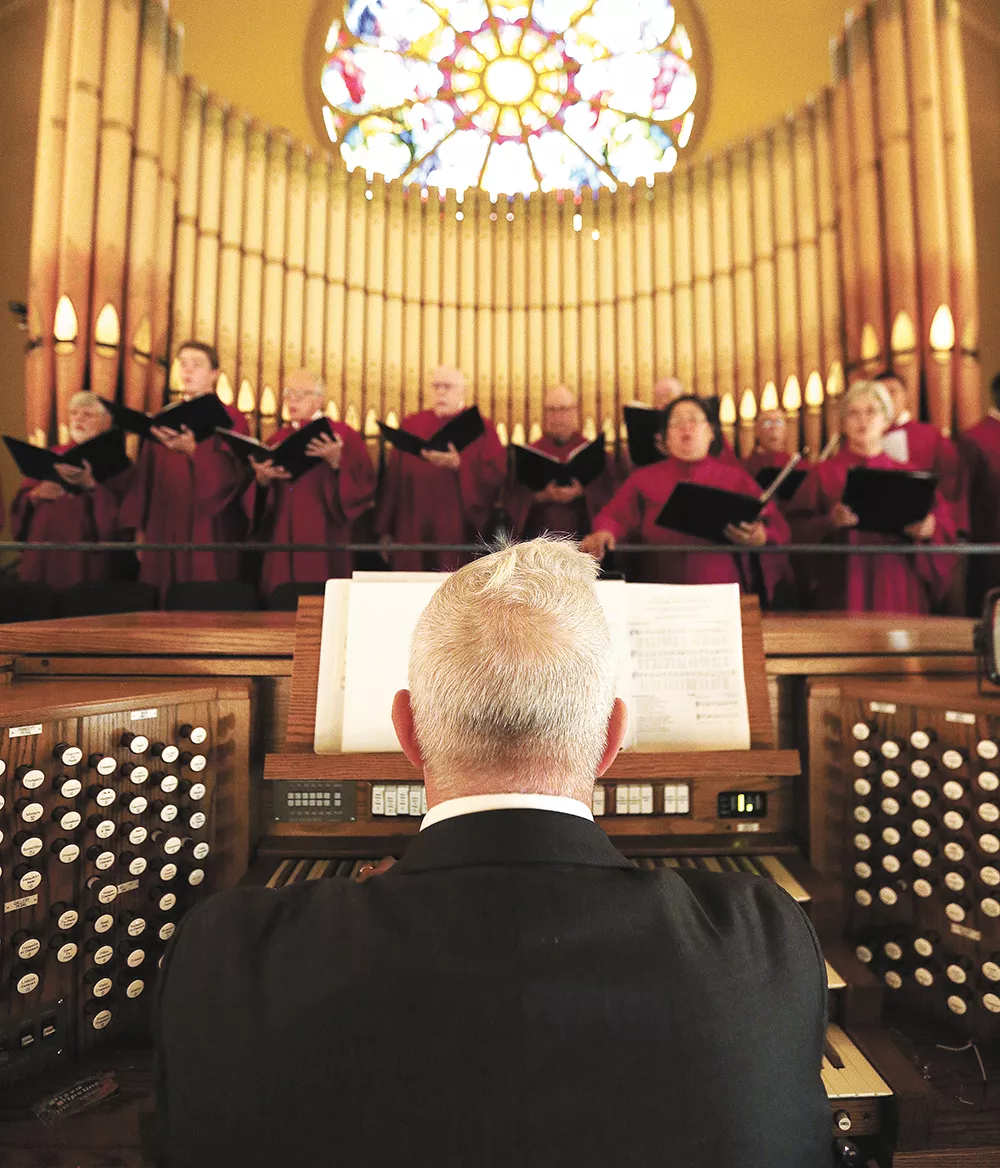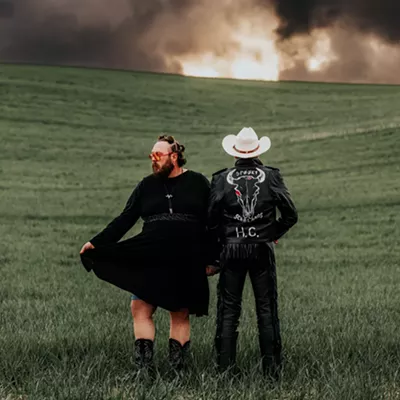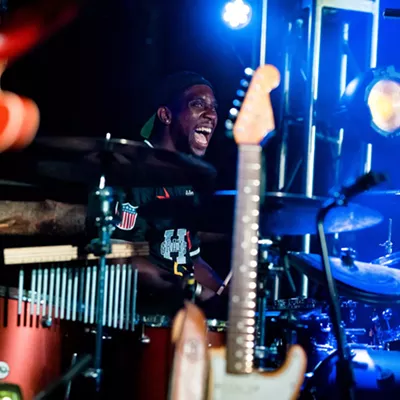
When it comes to musical instruments, new is often not best. New is often more manageable, but there's something about antique things — the way we can learn from them, or the way we can pretend to be surprised by their worth (Antiques Roadshow for the win). This week, we checked out some of the older, relatively speaking, instruments in town.
The Organ
It sits here in the balcony with its thousands of parts among the angels and Jesus and Mary. It may not be the grandest, but the pipe organ in the stained-glass-filled Cathedral of Our Lady of Lourdes certainly is one of the oldest in Spokane. Built in 1914 and ordered from Chicago's W.W. Kimball and Company (an organ is delivered in parts and takes a couple of months to assemble), the instrument is still in working use, albeit with some repairs needed (the last electronic updates came in 1994).
"Organs deteriorate. Most don't age well, as they're made of wood and leather and metal," says parish music director Robert Carr, one of the two people who play organ at the church. "We're looking to address the deficiencies. It's like a bunch of flutes up there, and currently we don't use it as much as we'd like to."
Back when the painted pipe organ was first installed, Catholic services didn't include hymns as a modern Mass would today, and it served more as an accompaniment, meaning a huge sound wasn't necessary. Today, the church mostly uses its newer pipe organ up front, installed in the 1970s. A new pipe organ would cost about a million dollars, Carr says, which is why many churches update what they already have, as you can see in the great European cathedrals.
"The organ is a glorious instrument," Carr says. "It lifts people's minds to God. Despite its size, it most closely resembles a human voice. All that wind that goes through it, it's just like a choir. It's not dying out yet."
The Brass Section
Bach Festival artistic director Zuill Bailey makes sweet music on a 1693 Matteo Goffriller cello, an instrument so delicate it has its own seat on plane rides. While stringed instruments, when well cared for and played often, can last for centuries, woodwinds don't. They're liable to rot thanks to all that lip service. Brass instruments, on the other hand, live somewhere in the middle.
Spokane Symphony's principal tuba player Leonard Byrne has quite the collection of brass instruments, many dating to the late 1800s. But as the tuba was only invented in the 1830s, there isn't a possibility of anything older. Of the three tubas he plays for orchestra concerts, his oldest is from the 1970s.
"There are some well-regarded brass instruments from the 1920s, but whether you can use them in a modern symphony is the problem," Byrne explains. "There's been a progression as orchestras were playing in bigger halls for larger audiences; it became an arms race, so now you have more powerful and larger instruments."
Byrne, who collects antique brass instruments as a way to connect with the tuba's history, has a euphonium, a sousaphone and even a serpent (a squiggly wind instrument). Sometimes, certain symphony works will call for them, but he more often attends special festivals, with "other weird people who like to play strange instruments."
Spokane's Northwest Museum of Arts & Culture also keeps a few instruments in its permanent collection, currently on display. About 20 years ago, African American trumpet player and photographer Wally Hagin from Spokane donated his silver-colored trumpet, which he played in various big bands beginning in the 1940s.
Marsha Rooney, senior curator of history at the MAC, says the point is to bring in items that will emphasize the regional story.
"It's about looking for a symbolic artifact," Rooney says. "We're not looking for music instruments specifically. But we're all trying to make the world a better place, and music can show that in many ways."
The Guitar
Guitar collectors are usually quite protective of their instruments; collectors like Bill Burke, who's put on Pig Out in the Park for nearly 40 years and has played guitar for longer than that, keeps his instruments all over town in various storage spots and safe deposit boxes.
"As a guitar player, you're always looking for the perfect guitar to play," Burke says. "It's part of the challenge as you learn different things about them. Today's guitars can't be like yesterday's. You can't get the paints anymore, the mahogany — you can't even cut those trees down."
Eben Cole of Cole Music, in the Garland District, keeps his personal collection close to the chest. His store is chock-full of vintage guitars, both acoustic and electric. The luthier even has his own line of ColeCraft guitars, emulating some of the greatest guitars from the past century — electric guitars weren't invented until the 1930s, but those built in the 1960s and '70s are often considered the best.
Cole says that people like to have something to hang up on their wall, so collectors, not players, drive the guitar market. When it comes to collecting as an investment, which can be even more lucrative than the stock market, Cole says the place to start is with something you're interested in, or what you may even play.
"Some people want that shiny new guitar," Cole says. "But these instruments have the scars to show for it. They sound good and feel good. That's what I'm interested in." ♦























